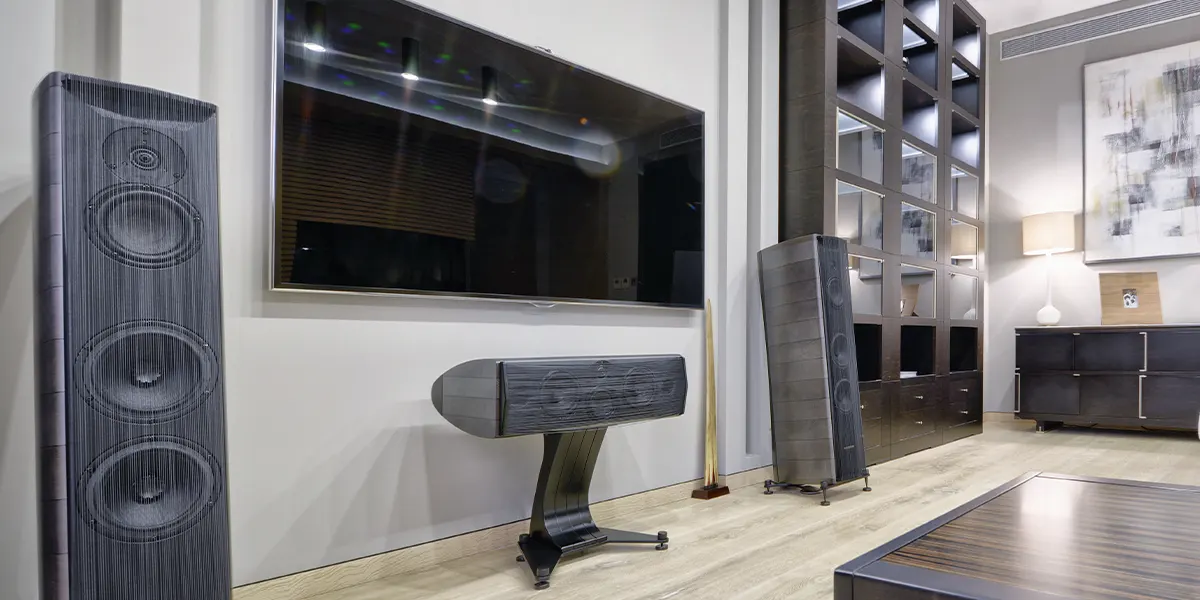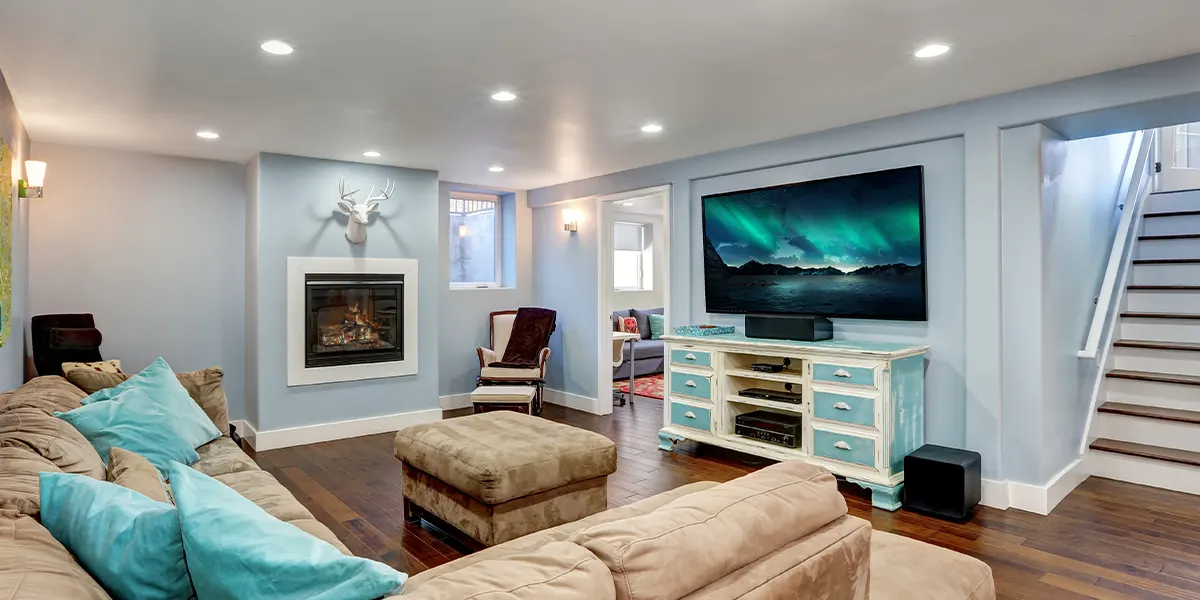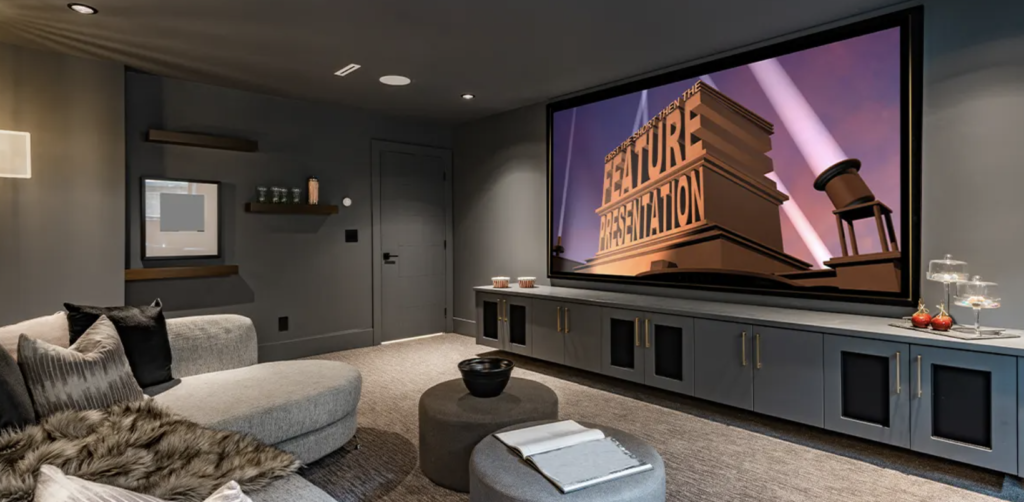Since installing your home theater, you’ve enjoyed plenty of movie nights and binged many TV series, but perhaps you’ve begun to recognize small details that just miss the mark of the actual cinematic experience. How do you go about fixing the tiny visual or auditory annoyances? Here at Audio Video Concepts, our team knows that your existing home theater likely only needs small adjustments or purchases to achieve optimal quality. Here are five simple ways to upgrade your home theater.
Calibrate your Media Settings
Most TV and projectors come with standard settings that aren’t a perfect fit for the atmosphere of every home, so it’s important to recalibrate the settings on your media player and TV to your standards. First, dim your ambient lighting to your preferred level to watch a movie, since some shows have incredibly dark scenes where it’s a struggle to perceive the action happening onscreen. Next, we suggest adjusting your TV’s colors, lighting, and contrast with picture presets and sliding adjustments to form a crisp image easiest on your eyes. Finally, modify your audio with modes like Bass Boost or Dialogue Enhancement that allows you to hear every word of characters’ conversations and the deepest frequencies of dramatic movie explosions.
Switch off Motion Interpolation
Have you ever seen a TV screen that makes a Marvel action film look like a soap opera? When the visual action feels a little too sharp and in-your-face, the effect known as motion interpolation may be switched on. This is also known as motion smoothing because the effect generates additional frames to simulate a higher framerate that “smooths” the image, and it’s often the default setting on newer TV screens. If you are one of the people who don’t prefer this setting, it’s simple to switch it off in the settings menu.

Move Your Speakers
Perhaps you don’t feel like your surround-sound experience is as good as the movie theater’s. Unfortunately, only an 11-channel speaker system will emulate the true subtleties of the cinema, but a quick rearrangement of your speakers will help improve the audio. Depending on your number of speakers, check for positioning diagrams easily found online to understand the perfect setup for your system. Most diagrams show a top-down perspective with the viewer in the center of the circle of audio. Your speakers should be located equidistant several feet from your seating arrangement along the perimeter of the audio circle. For example, if you have five speakers and one subwoofer, you have a 5.1 arrangement. Your left and right front speakers should create a 60-degree angle between them, and the third front speaker is centered in-between them. Your subwoofer should sit near the front depending on your space and preference, and the back speakers should be 100 degrees from the center. To increase sound precision, place your speakers on dedicated stands.
Bring in some Bias Lighting
If you find your eyes begin to ache after a particularly long movie, your screen may be straining your vision due to the contrast of the bright, dynamic screen against a dark, still backdrop of a room. By placing a gentle bias light behind your television screen, you create an effective aid that helps your eyes focus on the action onscreen without visual strain. Some bias lights allow you to choose between different brightness levels and color hues, but a simple LED strip works well for those on a tighter budget. Your eyesight will thank you.

Install a Soundbar or Subwoofer
Most TV speakers are too weak to manage the full range of high and low frequencies essential to the cinematic experience. But if you don’t already possess or want to invest in a multi-channel sound system, purchasing a soundbar and subwoofer is suitable to push your audio to the next level. Soundbars come with a range of prices and capacities; some simply enhance the dialogue and sound effects, while others have multi-room functionality and surround-sound capabilities. If you want to listen to music, some soundbars will pair with your smartphone via Bluetooth. By adding a subwoofer, you give a bass boost to your sound system, since its job is to handle the lowest frequencies in a movie. If you own an AV receiver, check the back for a sub-connection that links the subwoofer to the system.
Now that you’ve made a few alterations, we hope your home theater is feeling brand new! Here at Audio Video Concepts, we’re prepared to offer additional suggestions and equipment for your home theater. Whether you have questions about speaker arrangement or would like to invest in a subwoofer, give us a call today to begin!



